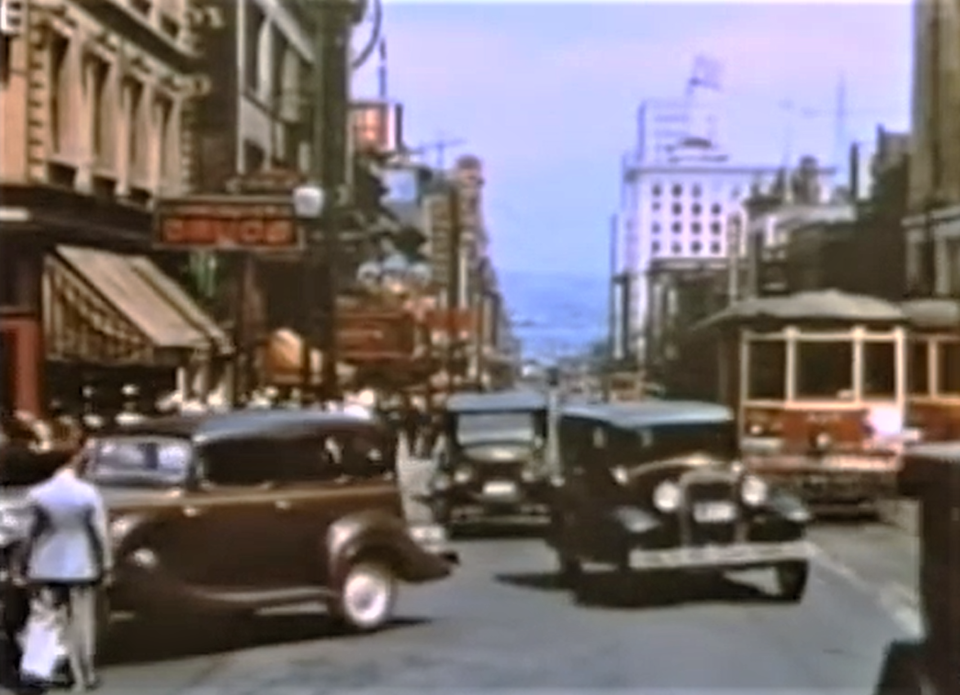By 1936, Vancouver was a fairly busy, metropolitan city, worthy of a travel film or two.
James A. Fitzpatrick, who created a series called Traveltalks and shared images and information about places across the globe, decided Victoria and Vancouver could share a film reel.
The nearly nine-minute clip is called Victoria and Vancouver: Gateways to Canada. It starts off with a bit about Victoria, noting how British it is (a common theme for B.C.'s capital). While the Empress and legislative buildings are familiar sights, the rest of the city's inner harbour is much less built up than now.
Shots of the city's downtown show a busier side of the city, but the film notes the local police disdain "the modern idea of traffic lights."
Butchart Gardens also gets a visit and then things get very Scottish with bagpipes and dancing performed in a park.
Fitzpatrick's narration gets very poetic at this point, talking about people coming from "bonnie Scotland" and bringing their culture "to be transplanted upon the virgin soil of their adopted country" as a group dances on a manicured lawn.
The film then moves to the RCMP.
"Nothing in the great northwest is more colourful and thrilling to witness than the so-called 'musical ride' of the Royal Canadian Mounted Police," he says, without noting why this had to be part of the Victoria and Vancouver travel film.
Fitzpatrick goes on to make some problematic statements about the RCMP and their history with local First Nations.
Here the film finally gets to Vancouver, which at the time had about 350,000 residents. The narration goes on for some time about the impressive nature of the city as a travel and transportation hub.
And from there it moves to lumber and Fitzpatrick notes the great fire of 1886.
"By a strange twist of fate, therefore, Vancouver, the great lumber port of the northwest, has fewer wooden buildings than any other city of its size in the Dominion of Canada," he says.
What follows is a review of local shopping, a tour of local homes (which includes an oddly long shot of a woman going to cut a flower) and then finally a trip to Stanley Park.
"Uniquely situated in the centre of Vancouver is Stanley Park with a total area of 1,000 acres encircled by a seven-mile motor drive," he says.
At the time the park already had an impressive list of places to visit, and so naturally the film focuses on a monument to Warren G. Harding, the president of the United States for just over two years. And then it ends.



